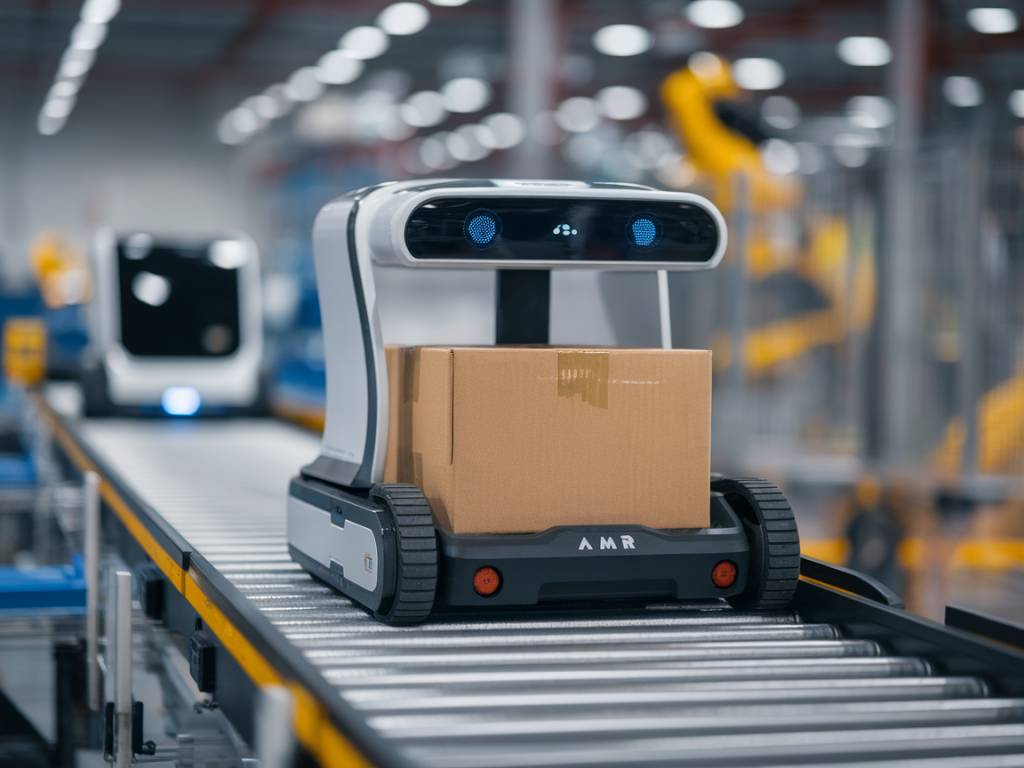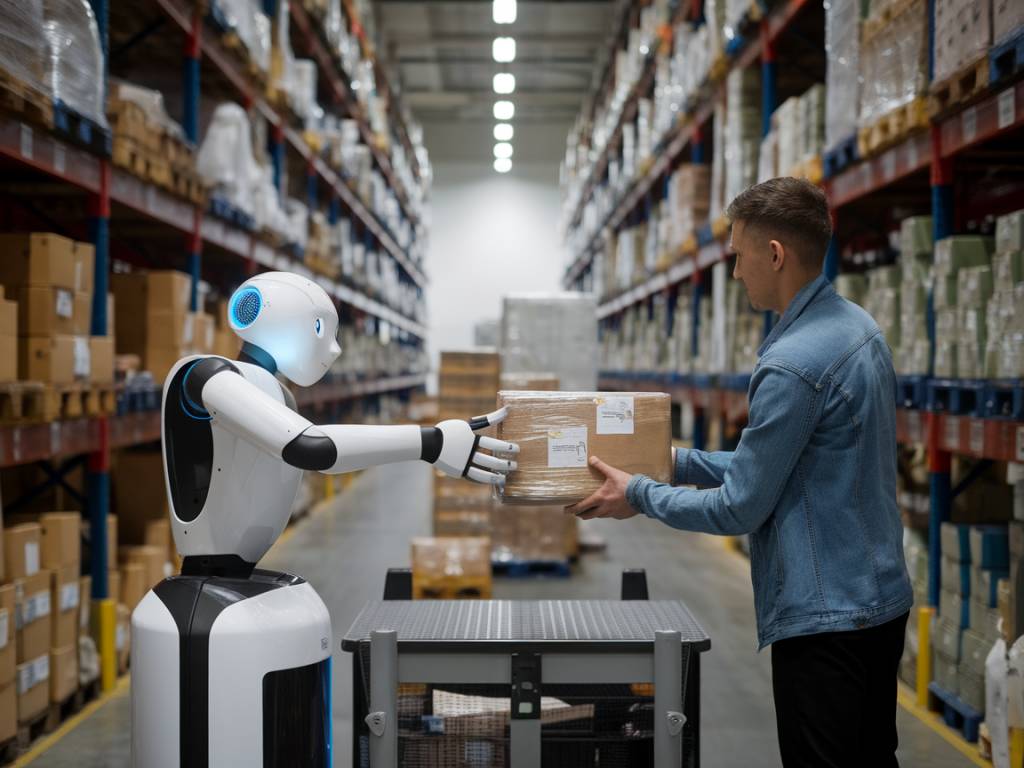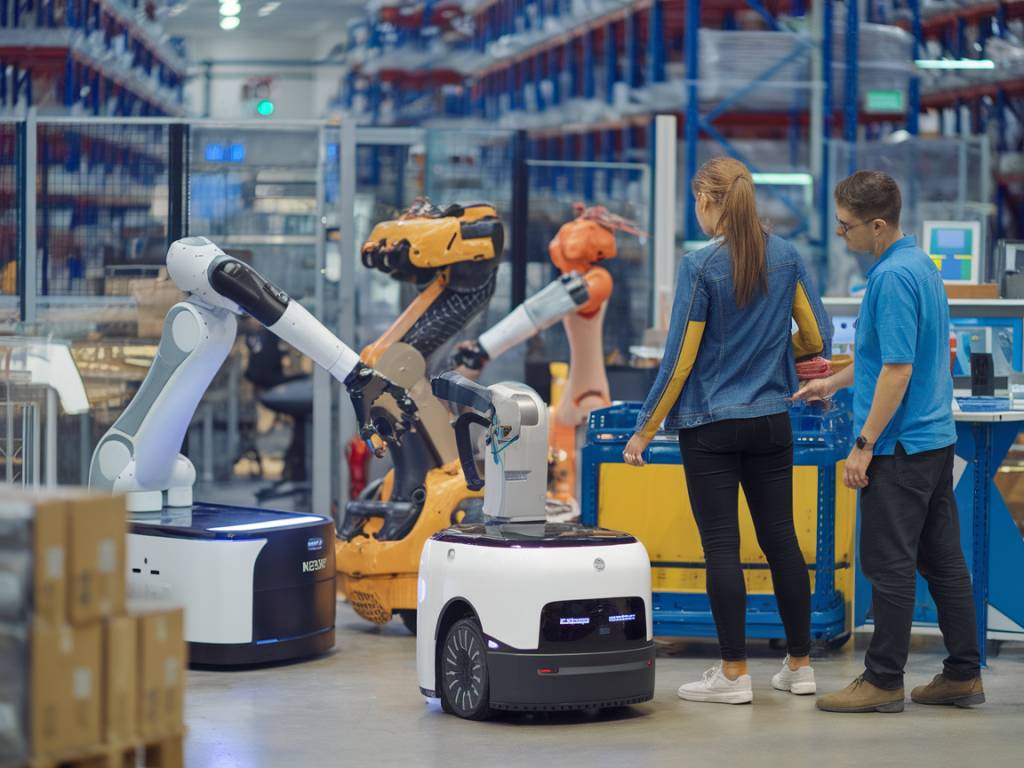
how autonomous mobile robots (AMRs) are revolutionizing order fulfillment
In the rapidly evolving world of logistics, order fulfillment has undergone a significant transformation thanks to the integration of autonomous mobile robots (AMRs). These advanced robotic systems have revolutionized the way warehouses operate, bringing unprecedented efficiency, accuracy, and cost-effectiveness to order fulfillment processes.
What are Autonomous Mobile Robots (AMRs)?
Autonomous Mobile Robots (AMRs) are sophisticated robots designed to navigate and perform tasks in dynamic environments with minimal human intervention. Unlike traditional automated guided vehicles (AGVs), which rely on fixed paths or tracks, AMRs use advanced sensors, artificial intelligence, and machine learning algorithms to understand and adapt to their surroundings in real-time.
Equipped with cameras, lidar systems, and other sensors, AMRs can map and navigate the warehouse environment, avoid obstacles, and collaborate with human workers and other robots seamlessly.
The Role of AMRs in Order Fulfillment
Order fulfillment is a critical process in logistics that encompasses receiving, processing, and delivering orders to customers. Traditionally, this process involves significant manual labor, time, and resources. However, the introduction of AMRs has transformed order fulfillment in several ways:
- Enhanced Speed and Productivity: AMRs can quickly navigate warehouse aisles, retrieve items, and transport them to designated areas for packing and shipping. This speed significantly reduces order processing times compared to manual operations.
- Increased Accuracy: Human errors in picking and packing can lead to incorrect or missing items in orders. AMRs, guided by precise algorithms and sensors, minimize these errors, ensuring accurate order fulfillment.
- Optimal Space Utilization: AMRs can operate in tight spaces and high-density storage areas more effectively than human workers or traditional machinery. This capability allows warehouses to maximize their storage capacity and make better use of available space.
- Scalability: As demand fluctuates, businesses can easily scale their operations by adding or reprogramming AMRs without significant infrastructure changes. This flexibility is particularly beneficial during peak seasons or sales events.
- Cost Efficiency: Although the initial investment in AMRs can be substantial, the long-term cost savings from reduced labor, fewer errors, and improved productivity outweigh the costs. Moreover, AMRs can work around the clock without the need for breaks, further enhancing efficiency.
Applications of AMRs in Order Fulfillment
Autonomous mobile robots are versatile and can be deployed in various aspects of order fulfillment:
- Picking: AMRs equipped with robotic arms and grippers can autonomously pick items from shelves and transport them to packing stations. Some advanced systems can even handle fragile or irregularly shaped items with precision.
- Sorting: AMRs can sort packages and products based on size, weight, and destination, enabling efficient sorting for shipping and delivery.
- Inventory Management: AMRs assist in inventory counts and management by continuously scanning barcodes and RFID tags, ensuring real-time inventory accuracy and reducing the risk of stockouts or overstocking.
- Packing and Shipping: While AMRs can bring items to packing stations, they can also assist in the packing process itself by supplying packing materials and even performing simple packing tasks.
Challenges and Considerations
While AMRs offer significant advantages, their implementation comes with certain challenges and considerations:
- Integration with Existing Systems: Integrating AMRs with existing warehouse management systems (WMS) and other software can be complex and may require significant adjustments.
- Initial Investment: The cost of purchasing and implementing AMRs can be high, which may be a barrier for small to medium-sized enterprises. However, the return on investment through increased efficiency often justifies the expense.
- Workforce Adaptation: Introducing AMRs in the workplace requires training for human workers to interact effectively with the robots. It’s crucial to manage the transition smoothly to minimize disruption and resistance.
- Maintenance and Support: Regular maintenance and technical support are essential to ensure the optimal performance of AMRs. This requirement includes regular software updates, sensor calibrations, and mechanical repairs.
The Future of AMRs in Logistics
The future of AMRs in order fulfillment looks promising as technology continues to advance. Several trends and developments are shaping the future of autonomous mobile robots in logistics:
- Improved AI and Machine Learning: As AI and machine learning algorithms become more sophisticated, AMRs will gain enhanced decision-making capabilities, allowing them to perform more complex tasks with greater accuracy and autonomy.
- Collaborative Robots (Cobots): The rise of collaborative robots, or cobots, which can work alongside human workers, will further enhance productivity and safety in warehouses. These cobots can adapt to human presence and even assist in tasks that require human dexterity.
- 5G Connectivity: The adoption of 5G technology will enable faster and more reliable communication between AMRs and warehouse management systems. This connectivity will improve data exchange and real-time decision-making, enhancing overall efficiency.
- Sustainable Practices: Future AMRs are likely to incorporate sustainable practices, such as energy-efficient designs and the use of renewable power sources, aligning with the growing emphasis on environmental responsibility in logistics.
- Customization and Modularity: Advancements in modular design will allow businesses to customize AMRs based on specific needs, making them adaptable for various industries and applications within order fulfillment.
Conclusion
Autonomous mobile robots are undoubtedly transforming the landscape of order fulfillment. By enhancing speed, accuracy, and efficiency, AMRs are helping businesses meet the growing demands of e-commerce and customer expectations. While challenges exist, the benefits of integrating AMRs into order fulfillment processes far outweigh the drawbacks, making them a valuable investment for the future of logistics. As technology continues to progress, the role of AMRs in logistics will undoubtedly expand, paving the way for smarter, more flexible, and sustainable warehouse operations.

 Leveraging Digital Twin Technology to Optimize End-to-End Supply Chain Visibility
Leveraging Digital Twin Technology to Optimize End-to-End Supply Chain Visibility  Optimizing Cold Chain Logistics with Smart Packaging Solutions
Optimizing Cold Chain Logistics with Smart Packaging Solutions  The future of logistics: integrating AI with warehouse execution systems
The future of logistics: integrating AI with warehouse execution systems  Collaborative robots (cobots): enhancing human capabilities in logistics
Collaborative robots (cobots): enhancing human capabilities in logistics  Automation in distribution centers: the role of robotics in streamlining operations
Automation in distribution centers: the role of robotics in streamlining operations  How AI-powered robots are optimizing inventory management
How AI-powered robots are optimizing inventory management  Enhancing Packaging Sustainability Through Circular Economy Practices
Enhancing Packaging Sustainability Through Circular Economy Practices  Smart Packaging Technologies: Bridging the Gap Between Product Safety and Supply Chain Efficiency
Smart Packaging Technologies: Bridging the Gap Between Product Safety and Supply Chain Efficiency